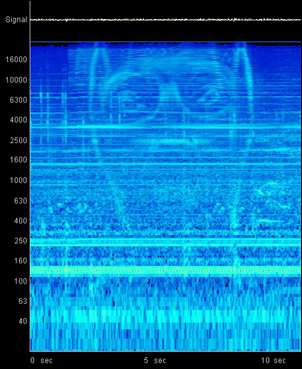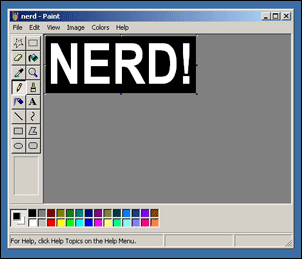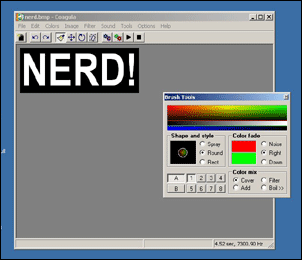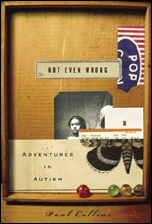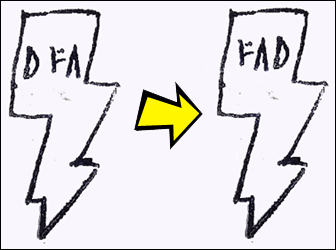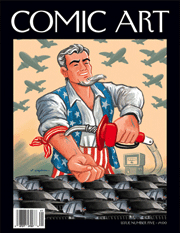In the past few years I’ve read in a number of places that Robin Williams is a flagrant comedy thief. What I’ve never come across are specific incidents of this occurring. So I decided to delve into the vast resource of usenet’s standup comedy newsgroups and see what I could dig up. Among the many permutations of ‘If Robin Williams is stealing your material, you’ve got bigger problems,’ I found lots of hearsay and references to a specific incidents, but none of the primary source information that I crave. I collect the ‘highlights’ here in the hopes that someone with more specifics (or better googling skills) will find this and get in touch with the details. Without further ado, the hearsay:
“One of the things that I’ve learned from doing standup comedy is that Robin Williams steals jokes. That’s the worst fucking thing any comic could ever do to another comic. His joke stealing is so well-known that whenever he steps in a club, any experienced comedian ends their set immediately.”
…
“My hatred for Mr. Williams goes back to my days in the mid-80s doing stand-up comedy. At the time, Robin was a big star in stand-up. But every big-time comedian that I worked with said the same thing about him … he was a comedy thief and everyone in comedy hated him. It was common knowledge that he would frequent comedy clubs, sit in the back and write down all the jokes that guys used that got laughs. Then he’d present them as his own “wacky improvisations” on television and garner all these accolades as being a comedy genius when NONE of his material was original, it was a hodgepodge of various young comedians best work. I used to hear stories about comedians who would get fired from clubs because they REFUSED to go on stage when Robin Williams would show up in the crowd. So…I was bred to hate the man.”
…
“He has a bad reputation as a comedy thief. Tom Kinney, a San Francisco comedian of note, once did a bit about Doc Ellis. Doc Ellis is a pitcher who pitched a no-hitter while tripping on acid. Tom Kinney’s bit was very funny. So funny that Robin himself told him so as he was caught doing the exact same bit at “The Boarding House” in San Francisco by Tom Kinney himself not two hours after he had watched Tom.”
…
“Robin stole material from practically everyone on the way up. Ask, Stephen Pearl, Jeremy Kramer, Gary Muledeer, Jeff Altman, Bill Kirkenbower, Joey Camen or anyone else that worked with him. This is not just me spouting, even in an Issue of Premire magazine they mentioned the fact that he was a joke thief. They mentioned a joke going around about a deli in new york that had a sandwich named after him..the Robin Williams..they give you a bun,but,you have to steal the meat.”
…
“He doesn’t lurk here, but it has been proven time and time again that he has a habit of doing other people’s material. He even said so himself in an interview last year (LA Weekly?). He even had to settle a lawsuit about the title of his first album because it was a catchphrase of another San Francisco comic at the time. Good actor, bad thief.”
….
“I remember watching Letterman last year and Ray Romano was on. Ray did a bit that he has been doing for a while about implanting phones in your head to make them more convenient. The next night Robin Williams was on the show and did the same bit word for word. Dave looked like Robin had dropped a turd into his coffee cup (Letterman produces Ray’s show).”
[This was by far the most-discussed instance of Williams’ swiping that I found. There is apparently tape of Romano doing the bit on an HBO ‘Young Comics’ special 12 years before Robin did it on multiple late night talk shows (Letterman, and a year later, Leno) It’s important to note that it’s not the concept that’s being stolen here, it’s the whole bit – phrasing and all.]
…
“Tonight on Leno I witnessed Robin Williams completely rip off a well known bit from Ray Romano. I know this is a Ramano bit and Robin used it almost to the word. The stolen set was the what if technology gets so bad that they start installing cell phones in are heads, call waiting on each ear, and faxes come out are asses. I know that I have seen Ray do that one before. I’ve been a Williams fan for years and never believed the stories that he was such a thief.I honestly thought that it was a case of sour grapes and this groups tendency to bitch and over analyze everything and anything. I have to say though after seeing Robin last night on national T.V. that I am no longer a sceptic but convicted that he is a thief. He did Raymonds act almost verbatim. I’ve been doing stand up for 3 years now. This really makes me want to
keep on plugging ahead. Can you spell ethics kids. Oh Fuck it.”
…
“Robin paid I think at least 3 months of Steven Pearls rent because he used what was obvious to any LA comic, a few of Steven’s bits on the Tonight Show or another well known show. Steve says he was glad he got some money and that over the years he has heard exaggerated stories that he pushed Robin up against a wall and threatened him etc etc…. which apparently isnt true.”
…
“It wasn’t pearl that slammed him.. it was one of wolfberg’s old buddies.. and just now my mind went blank… carl, who was at the door at the time had to break it up… robin went on the carson show… and I am pretty sure it was brenner who was guest hosting and told the story about how sometimes he’ll be on a rant or tangent..and stuff will pop out of his mouth.. and when it’s not his, he’s told about it in not so many words… he talked about how he was going to try to make it up to folks who told him that he screwed them cos he said something that was theirs on tv or radio. Fleischman called him on it once…”
…
“Everybody mentions Robin Williams, but don’t forget that Tom Dreesen kicked his ass for stealing one of his bits. To my knowledge, Robin never stole from Tom again.”
There’s a good article on joke thievery in the comedy world here. It discusses the touchy ethical questions implicit in the whole thing, as well as the ‘parallel evolution’ argument – that both performers devised the same bit independently of each other.
The article prints the following response to such a defense:
“In comedy, there is such a thing as squatter’s rights,” says Mark Breslin, owner and president of Yuk Yuk’s. “If one comic gets there first, the bit is theirs. It doesn’t matter if you thought
of the joke completely on your own, if you know another guy is already doing the bit, you don’t do it.”
The article also features a nugget of first-person testimony on Robin Williams from Swipee Steven Pearl:
“Robin Williams has to be in the top three names when there’s a discussion of joke thievery,” says Pearl. “But, nah, I never touched him. I did hear that a guy had him up against a wall and that it got ugly. You’d know him, he’s been in movies, but ain’t no way I’m giving you his name. But Robin used to do my material. We’d work together and the next night I’d see or hear that he was doing one of my bits.”
“One, I remember I did at the Holy City Zoo in San Francisco around the time of that Sun City song. I used to do Sammy Davis Jr. saying: ‘Hey, I won’t play Sun City — unless I get the big room.’ Then, I hear Robin’s doing it. I confronted him and gave him s–t and he cut me a cheque right there for a thousand bucks. There were a few more cheques for substantial amounts of money that kept my rent paid for a while. When Robin would come back to the clubs, after he became really famous, some guys would refuse to go on stage till he left the room.”
If all this dissection of the political side of the comedy world is interesting to you, you should check out the current issue of the New Yorker (‘The Humor Issue’), which features a great piece on the mechanics of starting out in stand-up via a profile of several young NYC comedians.
Update (via Email):
“Have you seen ‘The Aristocrats’?”
“The movie does a cut between Drew Cary and Robin telling the exact same version of the joke. The documentary makes no reference to this fact other than that. I already knew about the Robin Williams thing, so I kind of thought it was an inside joke as I was watching it. The rest of the audience, I suspect, had no idea.”
Update from reader Zach:
There’s an interesting bit about joke thievery in Dick Cavett’s autobiography:
“I needed a joke about eating out in New York, and somehow I hit on the idea of a Chinese-German restaurant. The punch was, “The food is delicious. The only problem is, an hour later you’re hungry for power.” I told it to Rollins (Jack, Cavett and Woody Allen’s Manager), who howled and said I had a biggie there. That night was a smash, and from then on it never failed, even when everything else did. Three days later, I was flipping through the daily papers, and my joke leaped out at me from Earl Wilson’s column. Except it was attributed to Rip Taylor at the Copa.”
“Naively and furiously, I called Taylor and asked him to stop doing my line. He said, “Oh, did I say that?,” and laughed heartily at the joke. I didn’t realize that the witty things attributed to celebrities in those columns are rarely said by them. Often they are phoned in by a guy who gets a hundred dollars a week to plant funny sayings for that person, and when he doesn’t have any he steals them.”
“From that point on, my best jokes would appear in Earl Wilson or elsewhere, attributed to Pat Henry or Jackie Vernon or London Lee, and once even to Woody, who had himself been the victim of this pernicious practice.We both had a good laugh over his getting one of mine. But the situation continued to gall me, and I would look out over the audience at the club some nights wondering which was the creep who was making more than I was off my material.”
“The print thievery didn’t hurt as bad as seeing and hearing your joke on Laugh In, television’s Niagara Falls of plagiarism, or on the Red Skelton Show, which survived for a year on Woody’s best jokes, or in the mouth of some crap comic on the Ed Sullivan Show, where it would stand out like a jewel in his otherwise vimitorious act and get a hand.”
“Sometimes I would call Woody to report the latest theft of one his jokes. He finally asked me to stop, because, number one, it pained him and if he didn’t know about it he would feel better, and, number two, it didn’t matter because the crap comics would always be crap comics, and although it hurts to have your jokes stolen, something about you puts you forever in another category and world from them, or at least that is what you tell yourself. He was right.”



